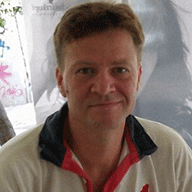It seems as if my cats and I are going to relocate to Oxford. It is the city of my birth and I grew up in a series of villages within 40 miles of here and went to university here so I know the area well. And now I am back here. There are worse places. Cambridge obviously springs to mind. And so on this cold bank holiday a family trip was organised to the "Pitt Rivers Museum."
If you have never visited this gothic structure opposite Keble you should find a few hours. It is named after General Augustus Pitt Rivers (born Lane Fox as in Martha) whose collection forms the backbone of what is on display. At the top level is a collection of armaments: guns, spears, tribal shields from across the ages and across the world. Nestling among them in a casual way is a box full of fish traps from across the globe. That is the way of this place: you never quite know what you will bump into.
The ground floor comprises a giant entrance hall packed with stuffed animals (a four metre stuffed crocodile was a big hit today) and dinosaur relics but also with collections of stones which I had hoped would drive an interest in certain quarters in geology. But a stone cannot compete with a giant Japanese spider crab caught in 1883. Apparently, although such crabs are rumoured to eat on drowned sailors, Japanese sailors regard them as a delicacy. My favourite hall is also on the ground floor, a dark room with a mad and unstructured collection of artefacts from across the world.
At the back is an enormous totem pole reaching up to the third floor. A collection of opium pipes and devices for taking snuff were hurried past lest they raise awkward questions. The shrunken heads are always a big hit. We may think that defiling the dead body of your enemy is pretty barbaric but – as the museum points out in a spirit of Political Correctness which I rather agree with – it is only three centuries ago that we in Britain would execute folks by decapitation and then put their head on a spike for public display. Is that any less barbaric?
I had not really thought about that until today, viewing shrinking heads as the sort of thing that only happened in bongo bongo land and that here in Europe we were above all that sort of thing. The most interesting display for me today was – as I was thinking about modern currencies – a three table display of currencies from across history. There is a 200 Mark coin from 1929. Very few were made because it took only a few weeks before the metal in the coin was worth more than the coin itself. That is inflation. That explains a lot about Germany. There were stamps from Turkey (1923) and Russia (1915) which became legal tender because those countries literally ran out of proper currency.
And then the range of alternative currencies – all used within the past 200 years. Slabs of tea were legal tender, shells, knives, lumps of iron ore. There was a Zulu type spearhead which one could have used in Southern Africa 100 years ago and was worth 25 British pence at the time. Which has held its value more – the British currency or the Zulu spear head. Of course it is the latter – bet no-one considered that a possibility at the height of empire. The point of these three magnificent currency display tables is that anything can be a currency as long as two parties agree on its value as a means of exchange.
What, I ask you is the value today of a 100 Euro note minted in Athens? As ever museums try to reach out to “young people” with pointless gadgets and ideas. Kids flashing torches powered by a wind up mechanism irritated me as I wandered around my favourite hall. The dark and gloom of that place adds to its appeal for me. But notwithstanding that, the Pitt Rivers is a pretty special place. It also features in both a couple of episodes of Morse and as the setting of the finale of one of the better Lewis episodes.


